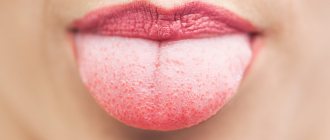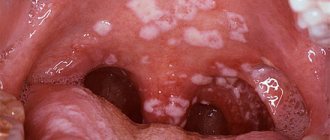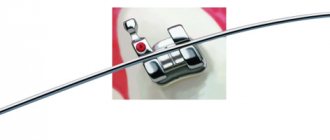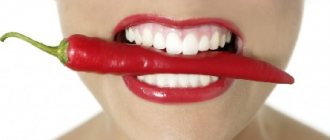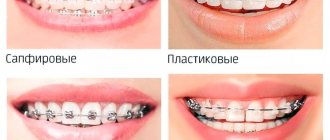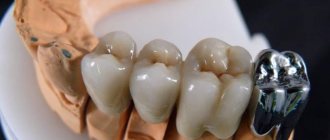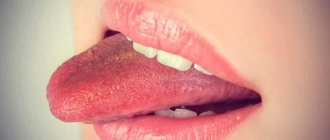The period of eruption of “eights”, the so-called wisdom teeth, occurs at the age of 16–27 years, although their rudiments are formed in 6–7-year-old children. The third molars are finally formed at about 22 years of age and only in rare cases at 26–27 years of age. Therefore, after 27, you should no longer count on their appearance.
92% of adults have a full set of wisdom teeth, but only 75% of them erupt, causing a lot of pain. For the rest, problematic teeth remain in the jawbone and in the gum tissue (they are called impacted).
Why are “eights” considered the most “difficult” teeth?
The eruption of third molars occurs at an age when the jaw bones slow down and stop growing, and there is simply not enough space for them in the already formed dentition. In addition, in the place where the “eight” should erupt, there was no milk tooth. Therefore, a person whose wisdom tooth is cutting experiences significant pain, weakness, and lacks appetite. The soft tissues surrounding the tooth become inflamed, and the body temperature rises to low-grade fever.
The process can go on, intermittently, for several months, and inflammation can lead to unpleasant and dangerous purulent complications and other undesirable consequences.
Diathesis, red cheeks - atopic dermatitis?
When children come to the appointment with red cheeks, red spots with peeling on the arms and legs, manifestations of atopic dermatitis, parents often do not know why their child has such problems.
Most often, mothers in such cases associate the manifestations of dermatitis with “Moscow water”, which “does not suit” them.
However, it must be recognized that food allergies most often occur in infants and, in the vast majority of cases, the culprit is cow's milk, or rather, cow's milk proteins.
If a child receives artificial nutrition, then the basis of such mixtures is cow's milk proteins (whey and casein protein fractions). Thus, when receiving formula milk, the child receives a large amount of the corresponding allergen.
If a child is breastfed, cow's milk proteins enter the child's body through breast milk.
Studies have shown that 95% of women have beta-lactoglobulin in their breast milk - one of the most allergenic proteins in cow's milk.
However, it must be emphasized that breastfed (naturally) fed children suffer from food allergies much less frequently, which is due, among other things, to the lower content of such components in breast milk.
The basis of treatment for manifestations of food allergies and intolerance to cow's milk proteins is the selection of proper nutrition.
When a child is breastfed and there are symptoms of intolerance to cow's milk proteins, the mother is often advised to adhere to a strict dairy-free diet, when all dairy products are excluded from the diet, including cheese, kefir, cottage cheese, etc., and not just whole milk, as is sometimes thought. Since such dietary recommendations are quite difficult to follow, especially for us, residents of the middle zone, where the culture of dairy nutrition is widespread, it is very important that these prescriptions have a real basis.
However, it must be admitted that there is an improvement in the condition of the child’s skin and the functioning of his digestive tract with proper nutrition correction. This is where even such a term as “diet diagnosis” came from, i.e., when, after excluding certain foods, we see a positive result, which confirms the diagnosis, and “diet therapy,” when continuing to follow the recommendations for appropriate nutrition, it is possible to achieve good therapeutic effect.
One of the frequently asked questions from parents is: “Is it possible to switch a child with intolerance to cow’s milk proteins to goat’s milk?”
The answer is not entirely reassuring. In the vast majority of children, when trying to replace a cow's milk-based formula with a "goat" formula, it is not possible to achieve remission and subsidence of the symptoms of the disease.
For rational nutrition of bottle-fed children with allergies to cow's milk proteins, specialized therapeutic nutrition based on hydrolyzed (split) components is used. In such mixtures, the protein is divided into smaller components, down to the smallest particles - amino acids. Such therapeutic nutrition should be selected by a pediatrician in close cooperation with an allergist-immunologist.
Another important aspect of the treatment of atopic dermatitis is external therapy. And in this case, it is necessary to start with basic, long-term moisturizing of the skin with specialized products - emollients.
Therapy for atopic dermatitis is carried out in stages, i.e. According to the severity of the disease, the “severity” of the drug effect is selected. In other words, we move from simple to complex, from skin moisturizers to preparations containing anti-inflammatory drugs, hormones, and, if necessary, antibiotics, etc.
Fortunately, usually by the age of 2-3 years, allergies to cow’s milk proteins recede into the background, and in 80% of cases, by the age of 5, children develop tolerance (immunity) to this product.
However, the calmer the child’s early childhood period is, the higher the chances of not moving to a new stage of allergic processes and maintaining health for many years.
Therefore, it is very important, if you suspect allergopathology, to look for the correct cause of this condition, and adhere to a healthy lifestyle and the principles of rational nutrition.
Pediatrician, allergist-immunologist, chief physician of the Sanare clinic Yulia Mikhailovna Marinina
Carious lesion of the wisdom tooth and the adjacent “seven”
It takes a lot of effort to really clean teeth that are far from the center, so their level of hygiene usually leaves much to be desired. They do not take an active part in the chewing process, so they also do not clean themselves. In the accumulating plaque, pathogenic microflora very quickly develops, causing the need for treatment of caries. Since, due to lack of space, the “figure eight” is often located obliquely, caries also affects the adjacent tooth - in the area of their contact.
Impacted third molars
- Lack of space leads to abnormal placement of the tooth in the jaw arch. Impacted teeth can grow towards the cheek and constantly injure its mucous membrane.
- In the absence of an antagonist in the opposite jaw, they cause serious malocclusion, ultimately leading to imbalance of the masticatory muscles, pinched nerve endings, dysfunction of the temporomandibular joint and even neurological disorder.
- A tooth that does not come out of the bone often provokes the formation of a follicular cyst, which does not manifest itself for a long time. This is explained by the presence of remnants of a follicle around it, the cells of which, for as yet unknown reasons, begin to multiply. The roots of the adjacent molar often get into the lumen of the cyst. This leads to necrosis of their pulp and necessitates the treatment of pulpitis and depulpation of the tooth.
- The third molar can put pressure on the roots of the second, causing headaches, soreness in the ear or throat.
Baby's red cheeks: should I worry?
Children's skin is incredibly sensitive to both environmental influences and the child's general well-being. Therefore, in some cases, red cheeks are a reason to think about the baby’s health.
Response to environmental influences
Red spots on a child's cheeks may be a banal reaction to cold or heat. The process of heat exchange in infants does not proceed the same way as in adults, so red cheeks can signal overheating or, conversely, too close contact with frost. In the first case, the baby must be immediately cooled, and in the second, apply protective cream to exposed skin 20 minutes before going outside.
Manifestation of allergies
Have your baby’s cheeks turned red, started to peel and even itch? This may be a manifestation of an allergy - food, household chemicals, dust or animals. Often the redness of the cheeks in this case is also accompanied by the appearance of redness in the area of the shoulders, forearms and groin. Be sure to consult a doctor to find out why your child has red cheeks and to eliminate the allergen from the environment that causes such a reaction in the baby.
Atopic dermatitis
Babies suffering from atopic dermatitis often experience redness, which is accompanied by severe dryness, itching and even crusts. As a rule, there are pockets of dermatitis on other parts of the body, and dryness and redness do not go away with the use of conventional moisturizing creams. Atopic dermatitis is a serious reason to see a doctor.
Enzyme deficiency
Enzyme deficiency usually manifests itself in children in the first year of life. One of its symptoms is redness of the baby’s cheeks (in this case, the child may not gain weight). When a baby eats more than his body can absorb, the unprocessed protein causes an allergic reaction and, as a result, reddening of the cheeks. In this case, you should carefully monitor the amount of food offered to the child, especially when artificial feeding.
Teeth cutting
Redness of the cheeks and swelling of the gums are sure signs that a new tooth will soon appear. At this time, the baby’s behavior may also change: he rubs his ears and cheeks, becomes irritable, and sleeps restlessly. You can alleviate the baby’s condition with special teethers or a soothing gel (as prescribed by a doctor).
Viral or infectious diseases
Red spots on a child’s cheeks are far from the only symptom that parents should pay attention to. For example, with ARVI this can be a fever, cough and runny nose, and with infantile roseola - loose stools, fever and a rash (first on the cheeks, and later throughout the body from the face to the feet). Red cheeks combined with pale lips and the tip of the nose can also be a sign of pneumonia. In all these cases, it is necessary to contact your pediatrician as soon as possible.
Everything is fine!
The most common cause of red cheeks in a child is an allergic reaction. But it is quite possible that the child simply spent an active day, moved and laughed a lot, or took a long walk in the fresh air. Such a blush is a joy for the mother and a sign of the baby’s excellent health!
Pericoronitis of the wisdom tooth is a serious danger to health and even life
Between the erupting tooth and the gum a so-called “hood”, which promotes the accumulation of food debris and the growth of colonies of pathogenic bacteria. Ideal conditions are created for the development of pericoronitis - a purulent inflammatory process. In this case, the gums swell and swell, the body temperature rises, the patient experiences severe pain, and an unpleasant taste and smell appears in the mouth. The inflammatory process can spread to the periosteum, causing periostatitis, and even to the bone tissue of the jaw, causing a deadly disease - osteomyelitis.
Periodontal diseases
Difficult access to the third molars does not allow them to be thoroughly cleaned of soft plaque, which very quickly turns into hard dental deposits. If the patient does not resort to professional teeth cleaning, the periodontal tissues surrounding the tooth will become inflamed - periodontitis will occur. This disease practically does not manifest itself for a very long time, and if left untreated, the infection spreads to the bone tissue, provoking the appearance of osteoperiostitis, better known as dental gumboil.
Timing and order of teeth appearance
Young children's first teeth erupt around six months of age. On average, one-year-old children have 8 incisors, and by the age of 3 the number of teeth reaches twenty. Meanwhile, the timing of teeth appearance may vary depending on the infant’s diet and hereditary factors.
Teething in babies occurs in the sequence described below:
- 6-9 months – lower front incisors;
- 8-10 months – upper front incisors;
- 8-12 months – lateral incisors;
- 12-19 months – first molars;
- 16-21 months – upper canines;
- 16-22 months – lower canines;
- 20-23 months – second molars (lower);
- 23-26 months – second molars (upper).

